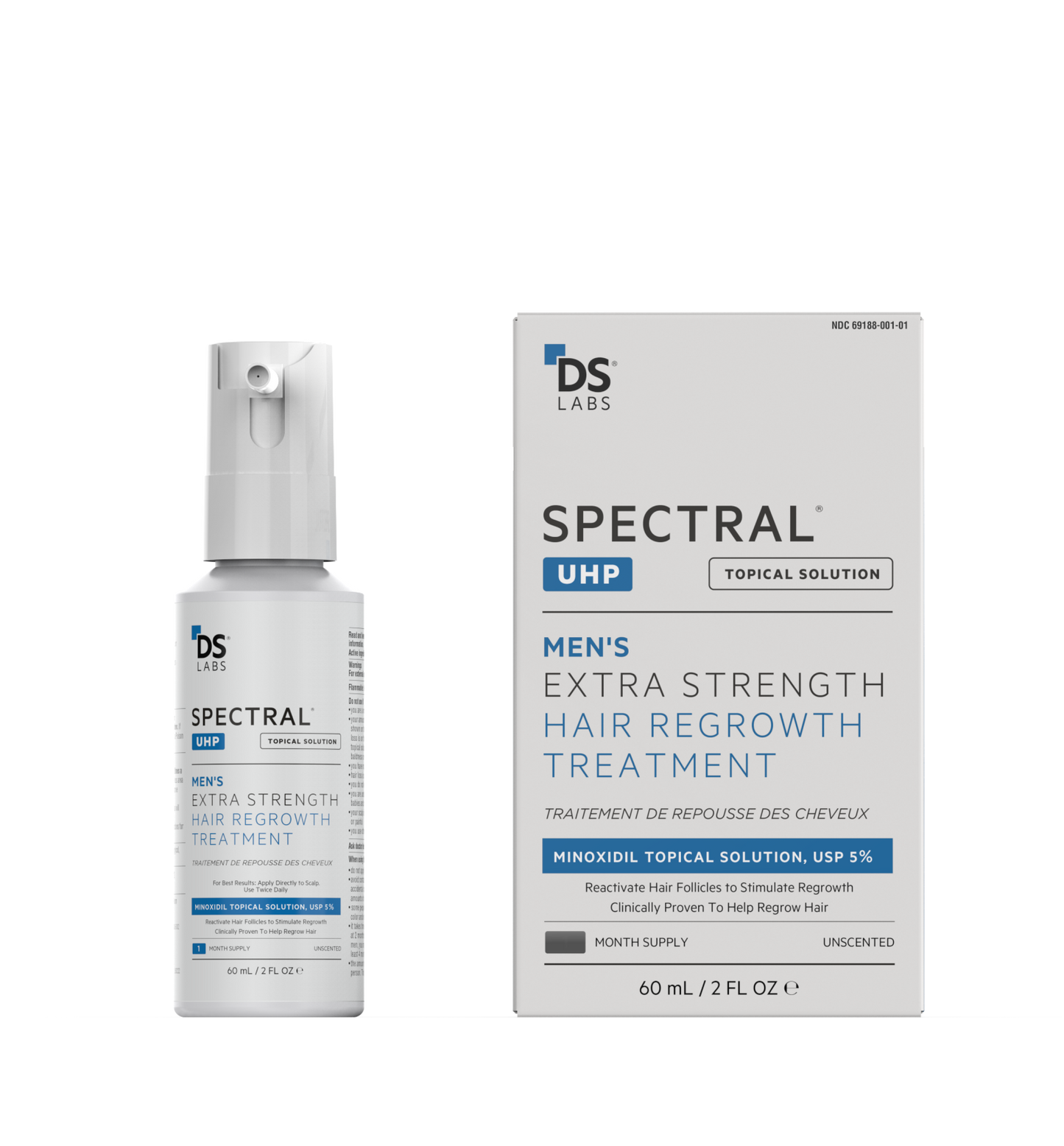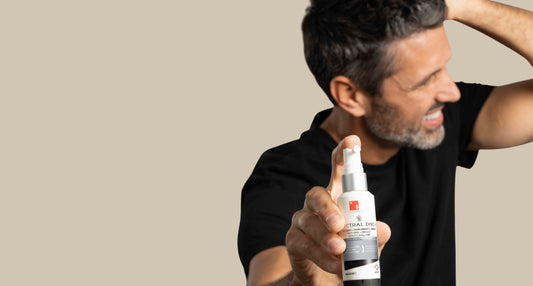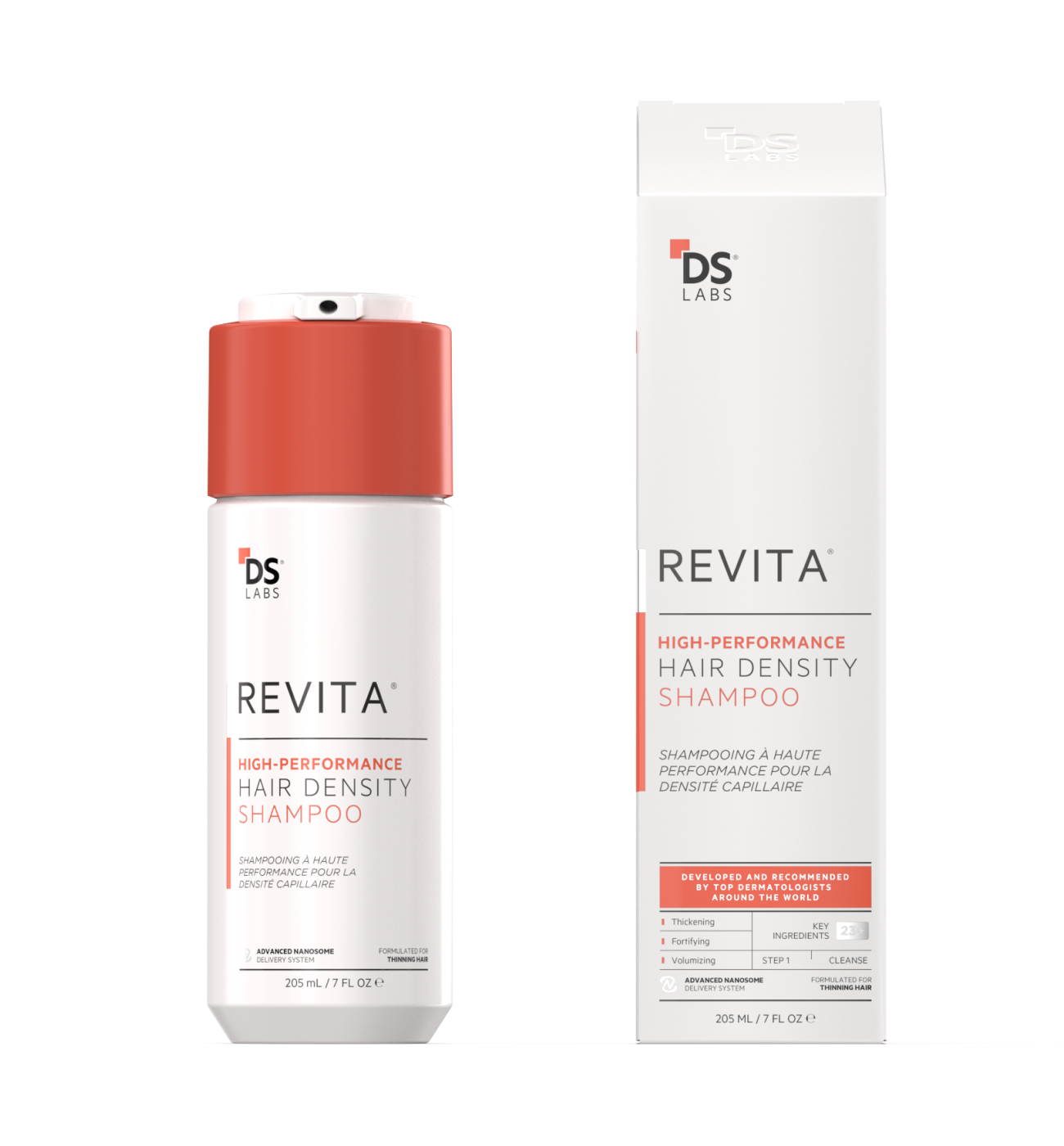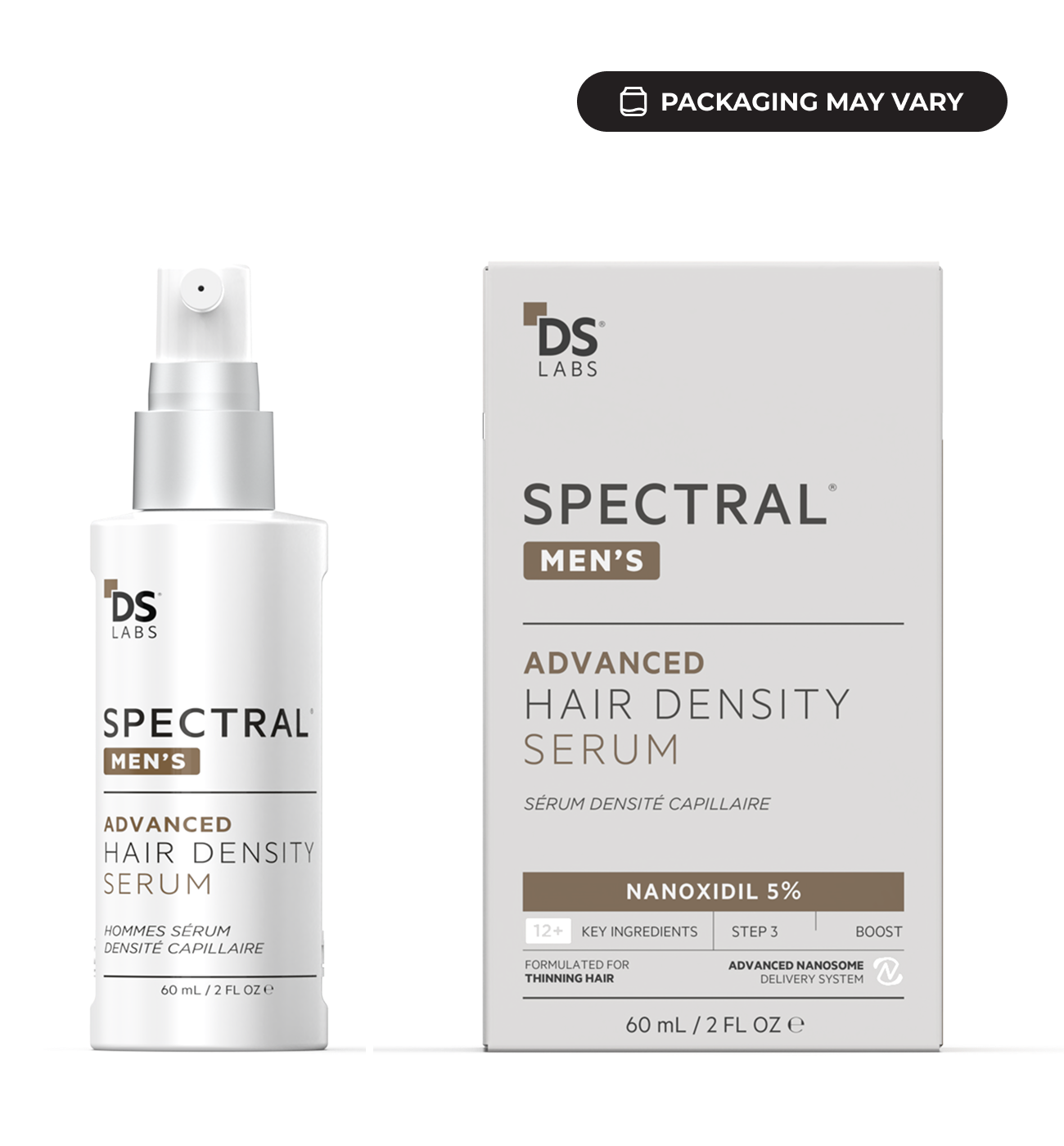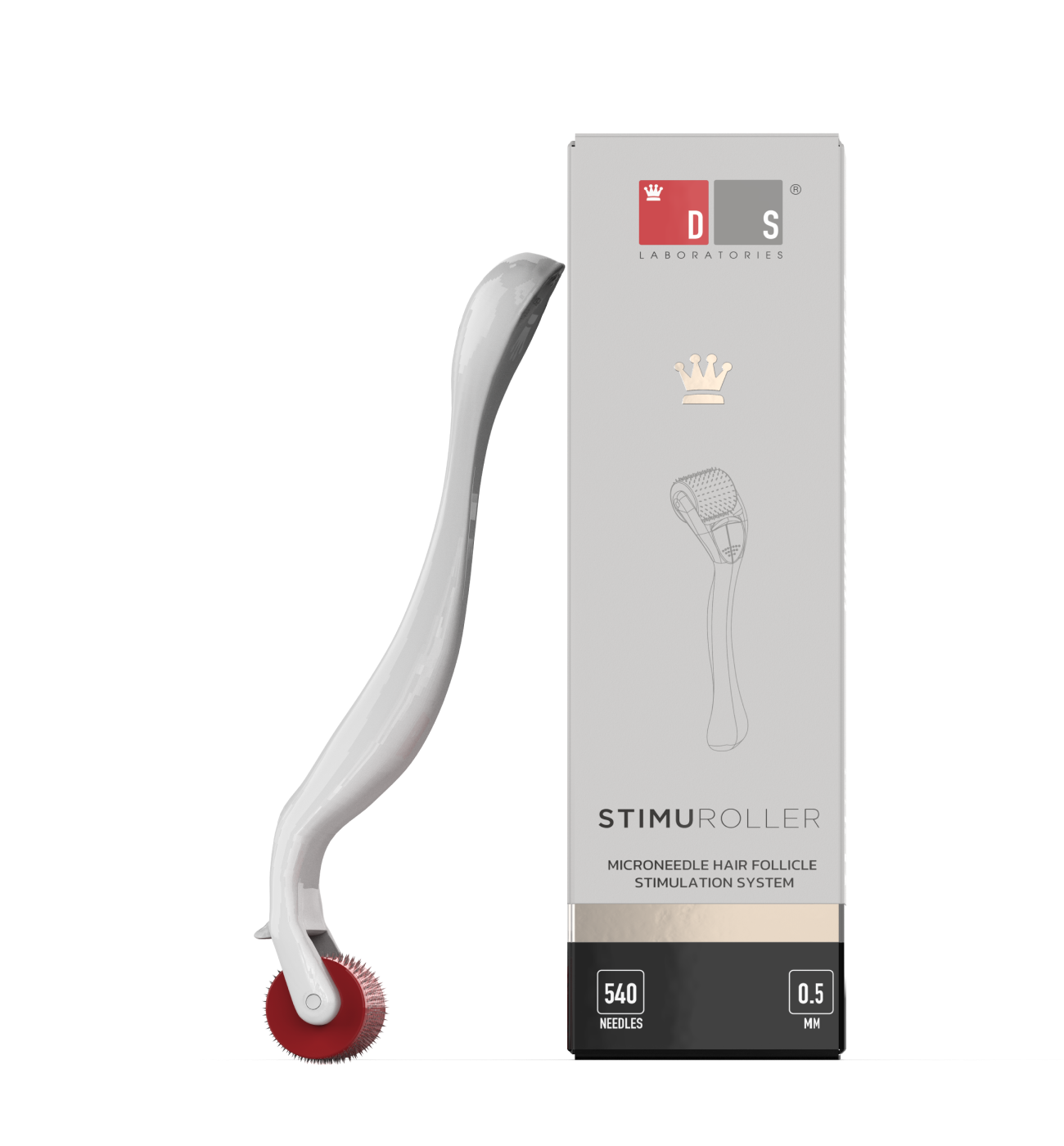Postpartum hair loss is a common condition that women experience after childbirth. It happens due to hormonal changes during pregnancy and childbirth which cause the hair to enter a resting phase. This leads to an increase in shedding and can be extremely alarming for new mothers.
Treating postpartum hair loss requires a holistic effort of rest, nutrition, supplements, and the right hair care products. One of the most popular treatments for postpartum hair loss is minoxidil. Let’s explore how effective it is, and what to expect when you use it!
What Is Minoxidil?
Minoxidil is an over-the-counter medication that is used to treat hair loss. Though it’s typically used for male and female pattern baldness, it also helps address other types of hair loss, including postpartum hair loss.
Historically used for treating high blood pressure, minoxidil is topically applied to the scalp. It is designed to improve blood flow to the hair follicles which helps stimulate hair growth. It’s available in different strengths of 2%, 5%, and 10%.
How Does Minoxidil Work?
Minoxidil widens the blood vessels in the scalp and opens potassium channels, thereby increasing blood circulation and delivering more blood, oxygen, and nutrients to the hair follicles. This helps strengthen the hair and stimulates hair growth.
It shortens the telogen or resting phase and prolongs the anagen or growth phase of the hair cycle leading to thicker, longer hair growth.
Does Minoxidil Work for Postpartum Hair Loss?
Postpartum hair loss is the excessive shedding of hair caused by the drop in estrogen levels following childbirth. Among the available treatments for new mothers coping with hair loss and thinning concerns, minoxidil is a very popular option.
A study conducted to observe the effects of 2% and 5% minoxidil solutions on women experiencing female pattern hair loss or androgenetic alopecia showed promising results. It found that the 5% topical minoxidil solution was significantly superior, but 2% topical minoxidil was also quite effective in promoting hair growth, scalp coverage, and hair count. Overall, even a low concentration of minoxidil was found more effective than a placebo.
Therefore, minoxidil may work for women who are experiencing postpartum hair loss. However, it is still subjective as people respond to the treatment differently. Some may experience significant improvement in their hair growth while others notice little or no improvement. Minoxidil is not equally effective for everyone. In fact, even if it does work for you, it will take a few months of consistent use before you can see any visible results.
How To Use Minoxidil
A minoxidil treatment such as the DS Laboratories Minoxidil topical kit is relatively simple to use. You simply have to apply the solution to the desired area and allow it to dry naturally without the use of a hair dryer.
It is important to avoid using the minoxidil solution 24 hours before or after a hair treatment. Other than that, it is safe to get your hair colored, relaxed, or indulge in other treatments while using minoxidil as long as you wash your hair prior to the treatment.
Here are some tips for applying the minoxidil topical solution:
- Ensure that your scalp and hair are completely dry.
- Apply the prescribed amount of the solution beginning in the center of the area.
- Immediately wash your hands to get rid of any residue.
- Allow it to completely dry for up to 4 hrs.
- Do not use a shampoo or hair dryer after applying the solution.
- Avoid going to bed for 4 hours after applying the solution as it can stain clothing and bed linens if the scalp is not fully dry.
Minoxidil and Nanoxidil: The Complete Hair Fall Repair Combo
If you’re looking for an extra effective treatment, you may be considering the Minoxidil + Nanoxidil topical kit. But, what exactly is nanoxidil, and how is it different from minoxidil?
The main difference is that minoxidil was initially intended as a hair growth treatment while nanoxidil was developed specifically to address hair fall. Both have a similar molecular structure, but nanoxidil also focuses on treating the hairline in addition to the vertex area. It also has better skin absorption compared to minoxidil as it is more lightweight.
Combined, both create a potent treatment that can be highly effective in treating postpartum hair loss.
Final Thoughts
Postpartum hair loss can be difficult to cope with on top of caring for a newborn. It can be challenging to get the required nutrition, rest, and hydration when you’re still recovering from childbirth, especially as your hormones and lifestyle undergo significant changes.
In such cases, holistic treatment may be difficult, but supplements and the right hair care products can be very helpful in decreasing hair shedding and encouraging hair growth. Minoxidil, if used correctly, can be extremely effective as it helps stimulate blood circulation so hair follicles receive more nutrients and oxygen. It enhances the growth phase of the hair cycle and can thicken hair.
So, if you’re experiencing hair shedding due to the hormonal changes of childbirth, or the lifestyle change is simply making it difficult for you to nourish your hair as much as you’d like, minoxidil can do the trick!



